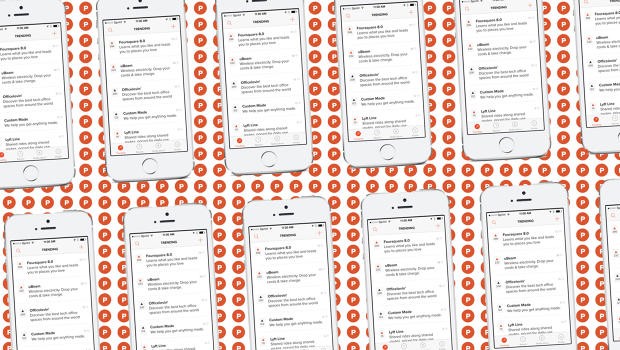A NoNonsense Explanation Of IEX The Exchange Fighting HighFrequency Trading ⚙ ⚙ code community
Post on: 27 Май, 2015 No Comment

In the late 2000s, Wall Street stock traders encountered a puzzling problem: Large blocks of available stocks would disappear upon purchase, but then reappear at slightly higher prices, ready to be bought. This happened repeatedly, to the point where it took several clicks, several seconds, and several thousand dollars more to complete a large trade. As the money added up over time, this mystery became more inconvenience than oddity.
The delay turned out to be due to a special type of high frequency trading—the kind made famous by Michael Lewis ‘s new book Flash Boys and the 60 Minutes segment that interviewed IEX founder and CEO Brad Katsuyama. an electronic trading floor that time-throttles trades to eliminate this HFT price sniping in the U.S. equities market.
IEX is located on the 30th floor of 7 World Trade Center in New York City—just one floor above the Fast Company offices. So we decided to pay our upstairs neighbors a visit and see if we could learn the step-by-step process of an IEX trade, which the media coverage has merely glossed over. What’s really going on here?
Here we’ll take you through a hypothetical trade.
- A trade is entered on a Wall Street brokerage computer on behalf of a client, to buy a certain number of shares of stock. The trade request leaves the firm and gets routed to one of 12 U.S. equity exchanges such as the NASDAQ or NYSE. (The order can also be routed to an Alternative Trading System, also known as a dark pool, of which there are currently several dozen.)
- By law, the exchanges are connected to provide consistent pricing information across them. This pricing feed is called the SIP. and ensures that the buyer of the security gets the lowest price across the board—the one true market price, also known as the NBBO. The exchange needs to sell the stock at the lowest price across the exchanges. Many times there will not be one exchange that has all the number of requested shares, so the order gets broken up and fulfilled across several.
- For the past few years, the fastest exchange has been the BATS exchange in New Jersey. so trades involving shares across multiple exchanges reach there first and execute. This is not because of BATS’s superior technology per se, but because of its geographic proximity in New Jersey from Wall Street where the trades initiate. Even though these digital signals are going at several miles per second, geographic distance still matters hugely.
- High frequency trading firms who have paid for a direct connection to BATS see that order appear on their system that’s directly hooked up to BATS—before this order has time to complete. That’s key, because it’s the time between the order appearing and completing that a faster trader can intercede and make money on the deal. Of course, this tip-off comes at a price, which can be $40,000/month for the $5 cable.
- Now that the HFT firm has seen the order appear—but not complete—it can front run the trade by sending a buy request for the same stock at other, known-to-be-slower exchanges. Then the HFT firm can sell the stock to the initial Wall Street broker requester for the market price. Since the HFT snapped up the stock, the requester’s order can’t be fully completed—so they end up buying only some of the shares they intended to buy. Because the HFT trade effected the one true price of the stock, the remainder of the order is now more expensive.
- While often substantial, the extra cost is just a percentage of a purchasing budget which can be millions, so the trader’s thought is: Whatever, I’ll just complete the buying and get it done despite the extra cost.
- The HFT almost immediately sells back the stock to the original requester, at a slightly higher price than before, thereby keeping the difference—the price differential. They don’t make a ton of money each time, but they took on almost no risk. So it’s a great deal, and in the aggregate, these transactions amount to millions of dollars every year.
- The trade is completed, albeit a few seconds later, with several clicks of the mouse and at a cost of several thousand additional dollars, all of it borne by the client.

In the past, everyone was happy with this arrangement: The HFT made a small profit, the exchange’s trading volume gets pumped up, and they receive a small commission for all this extra activity. And the client is happy out of ignorance. But in reality they’re overpaying by just a little bit each time, on everything.
In 2009, this practice peaked cumulatively at an estimated $5 billion in profit for HFT firms in the U.S. Now it’s back to below $1b, leading skeptics to point out that HFT could once again be slipping into obscurity and irrelevance, although HFT trades will continue to dominate a large fraction of total trading volume for the foreseeable future.
Worth noting, and perhaps underplayed by Michael Lewis in his book, is that most HFT nowadays is done in international markets or commodities, where traders at firms like Goldman Sachs arbitrage oil and Asia equity differences instead, which don’t use the NBBO. Thus U.S. equities is a niche problem, even in the world of high-frequency trading.
Recently, people like Katsuyama, the CEO of IEX, have pointed out the unfairness inherent in the opaque U.S. equities exchange system. They only allow legitimate HFT trading strategies and other types of arbitrage that aren’t a result of a tilted time-playing field.
IEX compactly coils connecting cables from its front end, where the trade arrives, to its back end, where the matching the order with the available stock takes place, to create physical distance which delays an order into IEX’s matching system (where the stock transaction takes place) by 350 microseconds on the way in, and again on the way out. Meanwhile, IEX uses their faster connection (270 microseconds compared with 350 microseconds) to update the SIP prices as the trade is coming in. Because everyone has to go through the delayed door to trade via IEXís matching engine, this means that no one will have more up-to-date information on the markets than IEX will already have, and the price stays fair and accurate.














